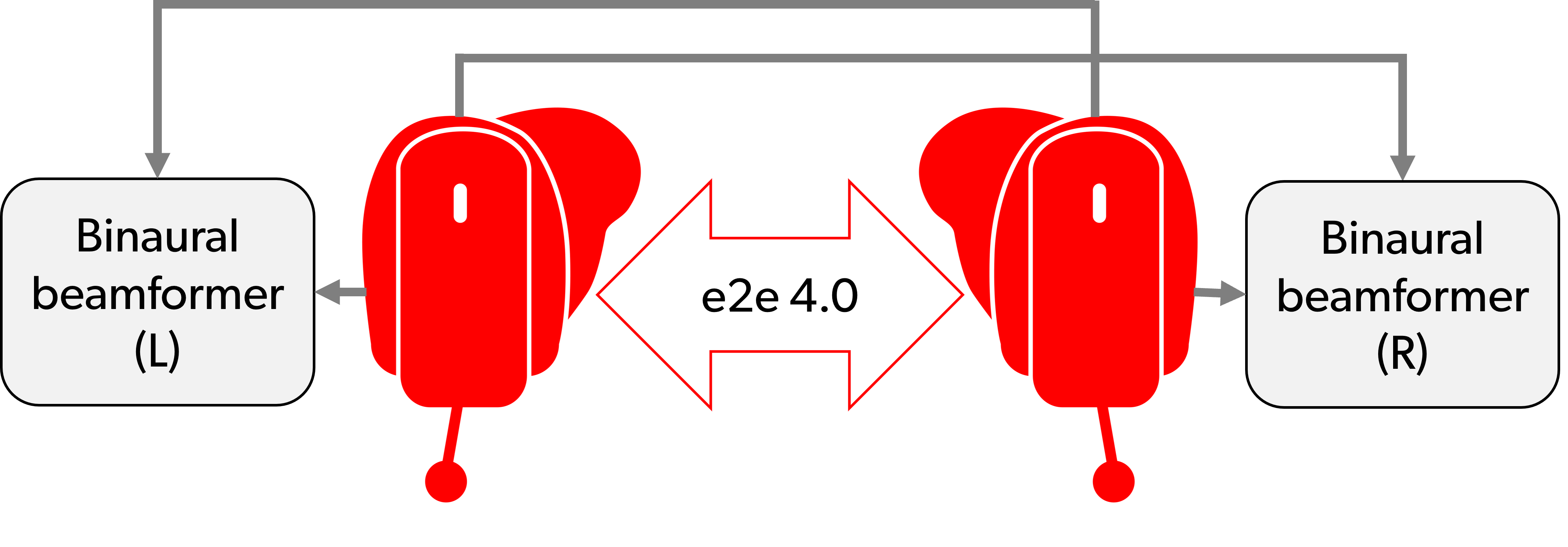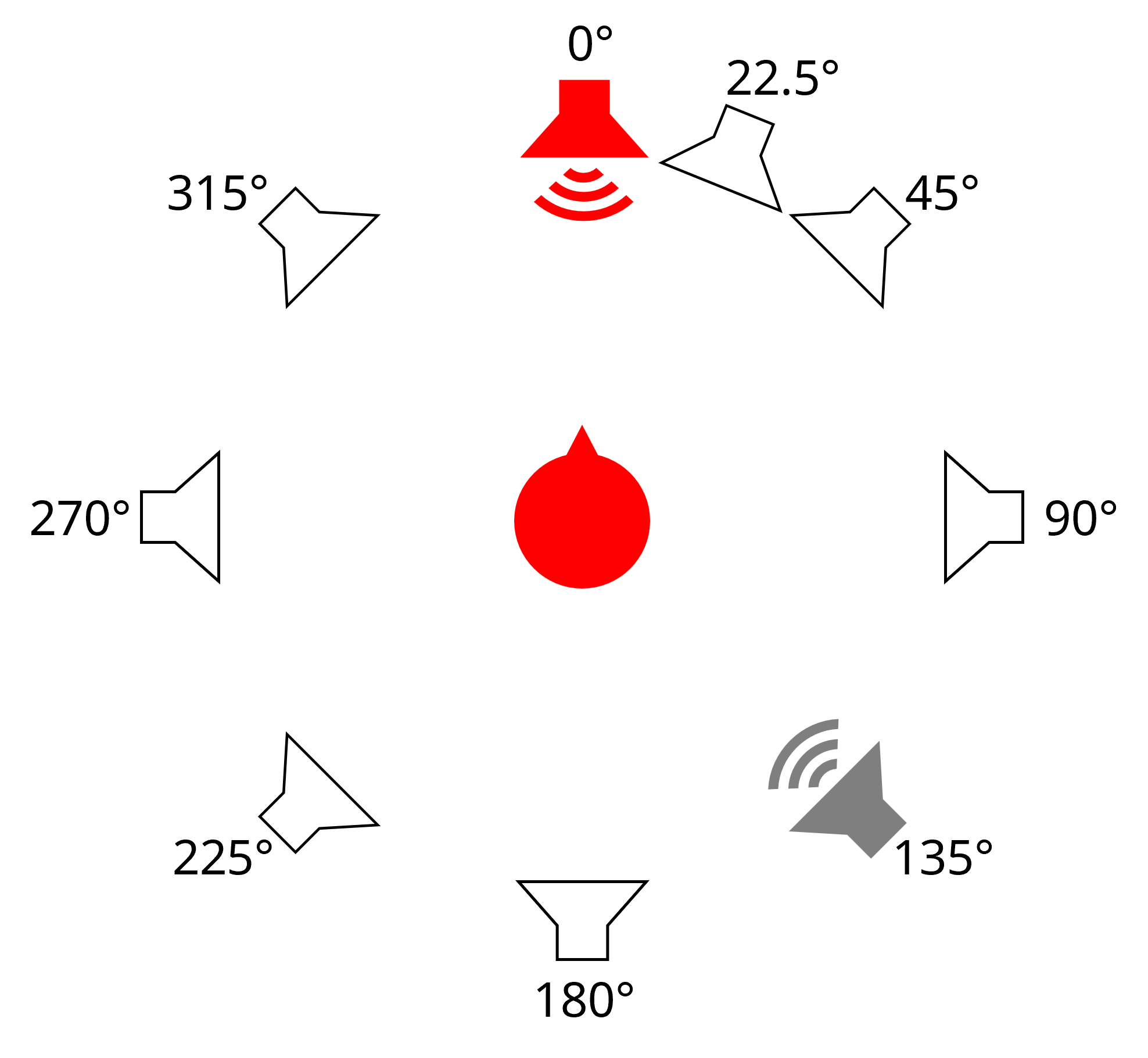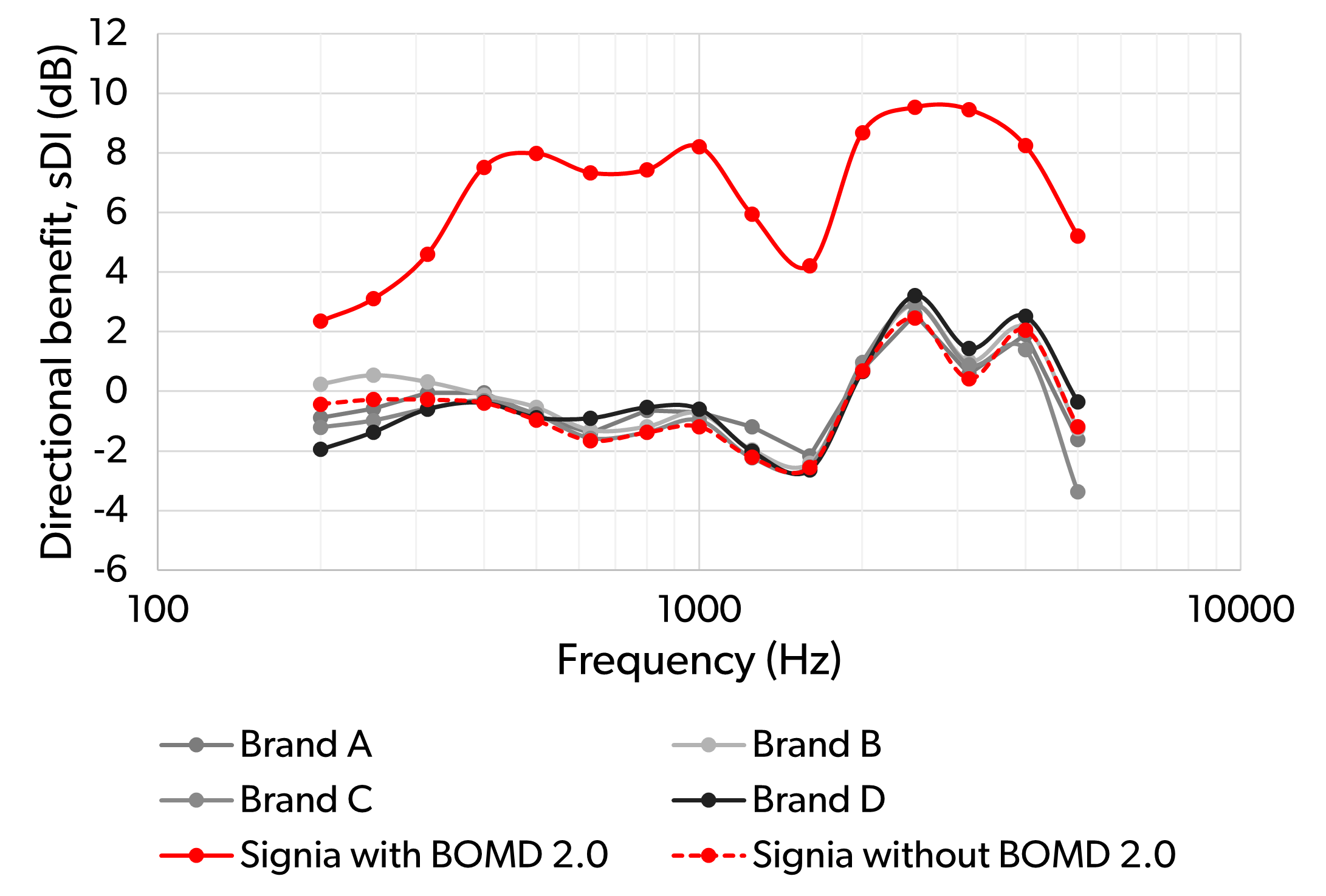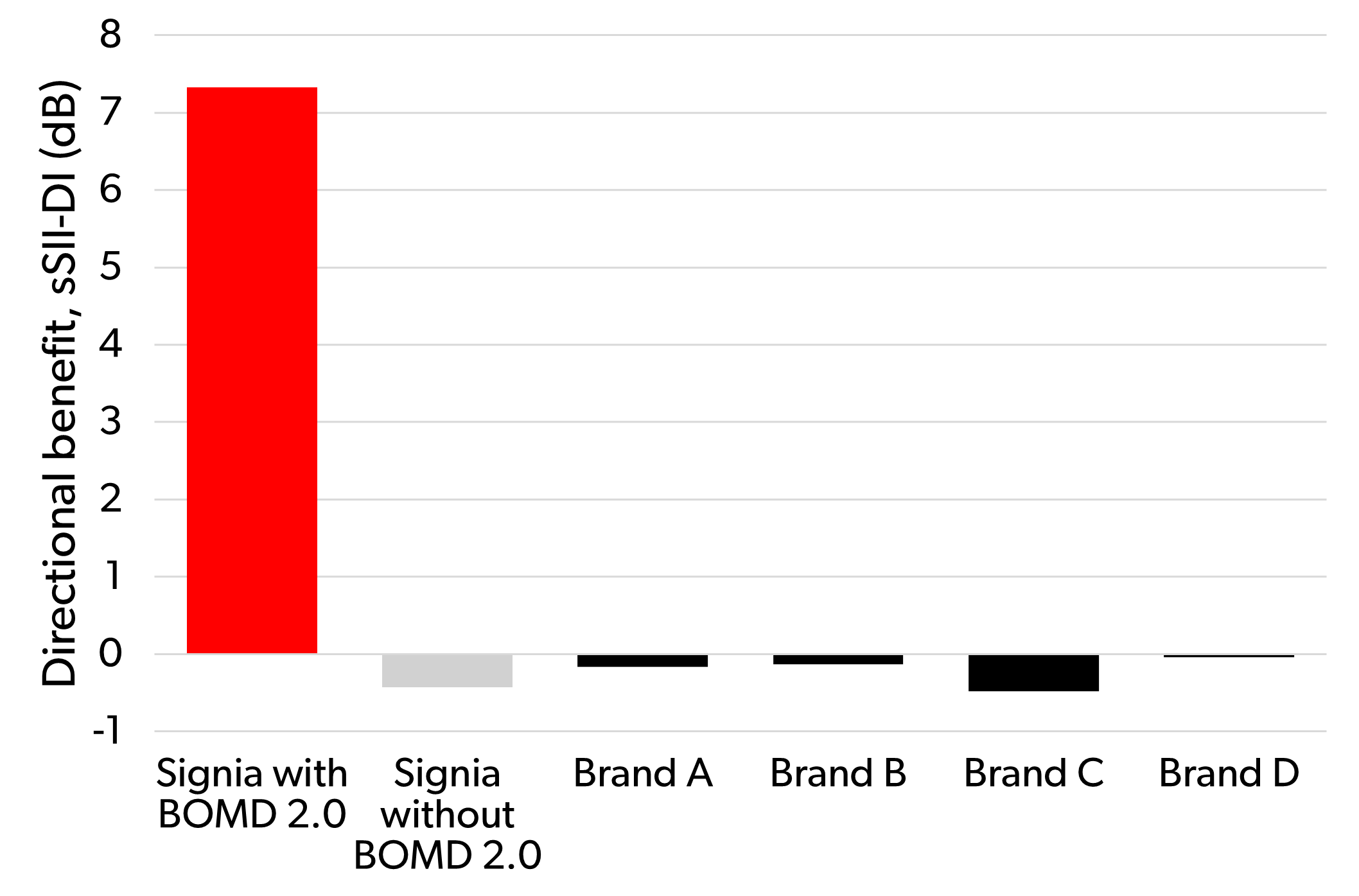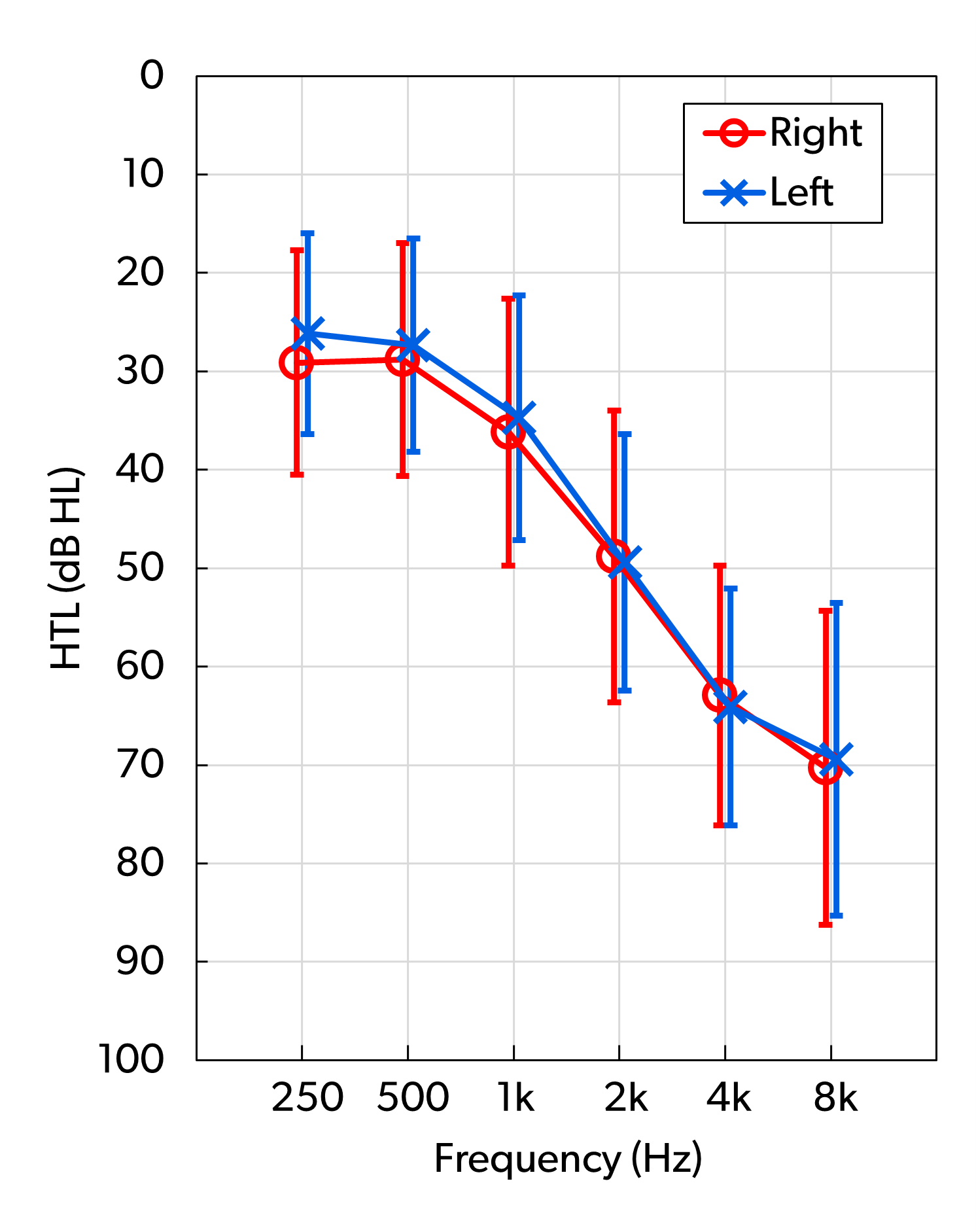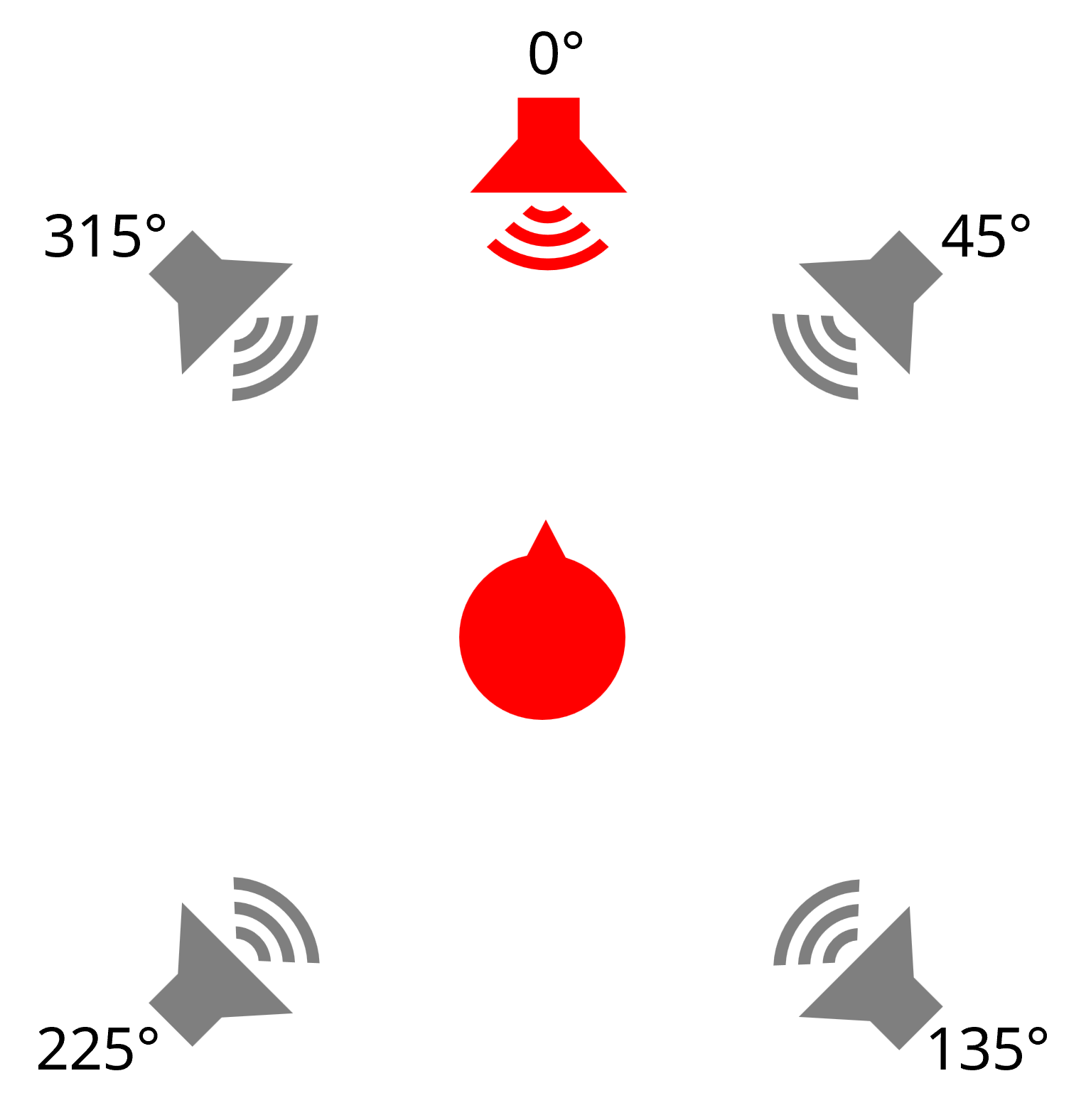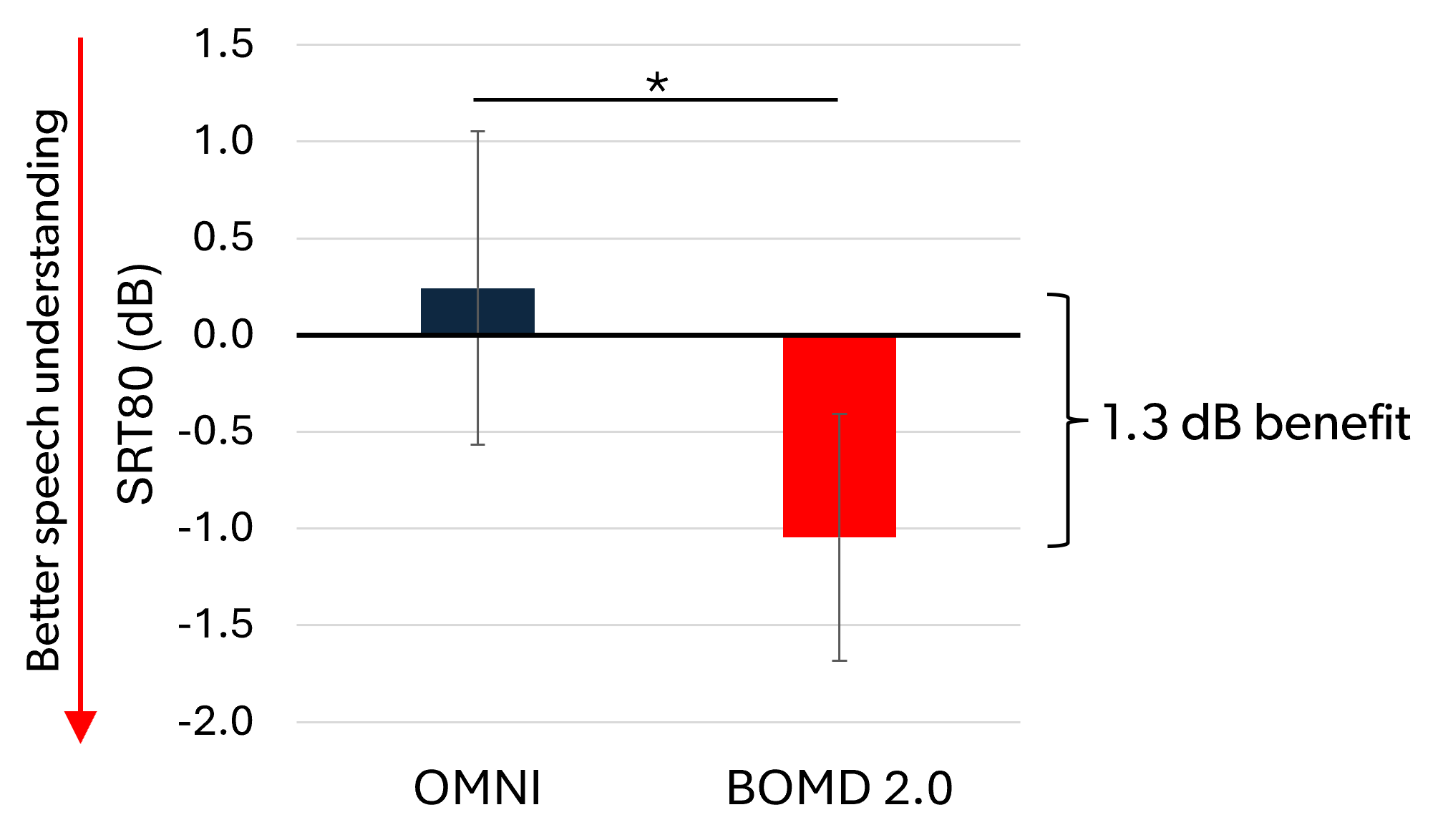Improving speech clarity in noisy environments is essential for enhancing hearing aid wearer satisfaction. Applying directionality in hearing aids is widely recognized as the most effective method of improving the signal-to-noise ratio and enhancing speech-in-noise clarity. Signia’s unique Binaural OneMic Directionality (BOMD) 2.0 technology makes Signia the only manufacturer capable of delivering directionality in single-microphone hearing aids – enabled by the low-latency, wide-bandwidth ear-to-ear communication (e2e 4.0) offered by the Signia Integrated Xperience (IX) platform. In this white paper, we present two studies that assess the technical and human performance delivered by BOMD 2.0. The first study demonstrated that BOMD 2.0 delivers five times the speech enhancement in noise compared to key competitor CIC hearing aids that can only offer an omnidirectional response. The second study confirmed that the directional benefit provided by BOMD 2.0 translates directly into a significant improvement in the wearer’s ability to understand speech in noise. Together, the results provide clear evidence of the benefits of BOMD 2.0 technology, available in all single-microphone Signia IX hearing aids. BOMD 2.0 technology empowers hearing care professionals to deliver exceptional speech-in-noise performance to their clients, without compromising on the discreet CIC fit valued by many wearers.

